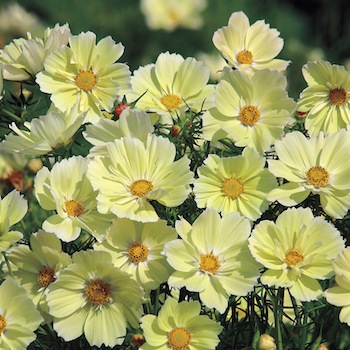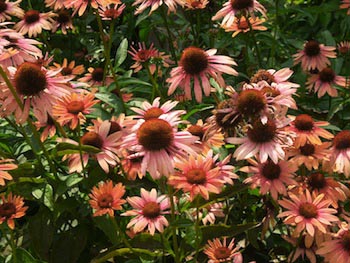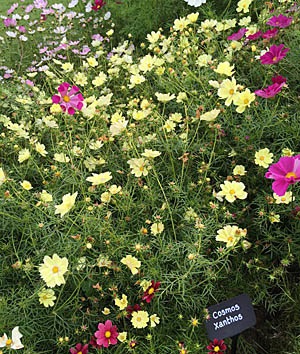Planting Seeds of Doubt
How to read between the lines in a seed catalog
By Ray Novitske, Fairfax Master Gardener
A historic blizzard is raging outside while I peruse the garden catalogs I received in the mail this month. They have been languishing on my coffee table, beckoning me with colorful, new plant introductions slathered across their covers. I usually wait for an appropriate time (like during a snowstorm) before examining their content. A garden catalog, a snowstorm and a cup of hot chocolate are a surefire combination to get the gardening juices flowing. But before I — or you — place any orders from these catalogs, let’s consider some of the tactics they use to entice customers.

Xanthos cosmos photo in seed catalog
New has other issues, too; I equate it with expensive. With many new introductions, quantities on hand for sale are usually limited. It may take several years to develop enough seed stock and inventory to satisfy the gardening world’s demand for the unique.
With a limited supply and great interest, prices follow the laws of supply and demand. Rare seeds also mean higher-priced seeds. When encountering new catalog introductions, I usually turn the page and wait a few years for more product availability and for demand to fall along with prices.

Echinacea ‘Sundown’
There are a few other terms found in catalogs that deserve suspicion. Beware of prolific or vigorous growers; these descriptors often mean spreads out of control and invasive. Companies obviously are able to sell more seeds for plants they label as vigorous, as opposed to invasive.

Echinacea ‘Coconut Lime’
Another way seed catalogs try to entice you into a purchase is to feature irresistible photos. I always tell people, “Plants and flowers don’t look like they do in a catalog.” Case in point: I wanted a unique allium and found ‘Persian Blue’ in a catalog photo. The flowers were a beautiful blue, but the leaves were also blue, and even the soil was blue, indicating that the photo had been through Photoshop to increase the blue coloring. I wondered how many customers ordered ‘Persian Blue’ only to be disappointed when the color was more like a purple.

Xanthos cosmos in the garden
One last tip is to compare price, of course. For the ‘Xanthos’ cosmos, Park Seed charges $2.95 for a seed pack and Burpee expects $5.95, with three other companies’ prices falling somewhere in between the two.
The catalogs offer you a greater selection of seeds than your local stores. They are full of colorful photos and equally colorful descriptions. Sometimes, we just need to read between the lines and remember that the main purpose of catalogs is to sell. A little bit of knowledge and information can go a long way in making sure we are making good buying decisions.